
|
|
|
|
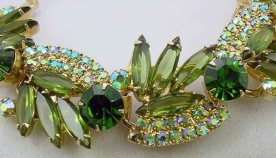
|
Is it Really Juliana?Tips for Identifying Genuine Juliana JewelryThis page is designed to provide some tools for learning to identify Juliana jewelry. | ||||||||
|
Juliana is a line of jewelry that was produced by De Lizza and Elster (D&E), a firm that also produced jewelry for other jewelry companys. D&E produced jewelry from 1947 to 1990. The Juliana line of jewelry was produced between 1967 and 1968. It is sometimes difficult to distinguish the Juliana line from other jewelry produced by D&E. For this reason, sellers will often identify their jewelry as "D&E Juliana" Jewelry. Juliana jewelry was not signed, but was sold with a hangtag. To identify Juliana jewelry, you need to look for some specific traits. As with most vintage jewelry, you need to look at the back of the piece. The front is pretty, but the back tells the story. Following is a list of traits to look for, with pictures for illustration. In trying to identify D&E jewelry look for as many of these attributes as possible. The more attributes you can find, the more chance you have of owning a genuine piece of D&E. | |||||||||
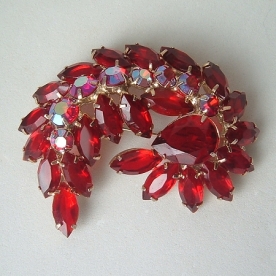
|
Juliana is "Glitzy"Look for "over the top" glitz with Juliana jewelry. Juliana jewelry is quite pretty and frequently breathtaking. D&E is well known for their use of art glass, more than one size and shape of stones, and multiple colors of rhinestones all in the same piece. In addition, D&E often made excellent use of AB or Aurora Borealis rhinestones. Photo provided by My Classic Jewelry Shop (eBay) | ||||||||
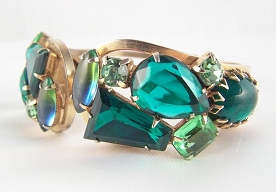
|
Juliana has DimensionalityMany D&E pieces are tiered, domed, or are otherwise 3-dimensional for lack of a better term. It is rare to find a totally flat piece of D&E. | ||||||||
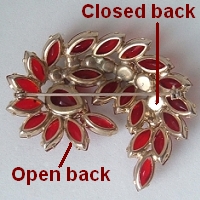
|
Open and Closed Back RhinestonesOne well-known attribute of D&E jewelry is their use of open back, unfoiled navette rhinestones coupled with the use of closed back, foiled chaton or round rhinestones. However, it is important to note that many jewelry manufacturers used this combination, so the presence of this characteristic alone does not guarantee that it is D&E. Photo provided by My Classic Jewelry Shop (eBay) | ||||||||
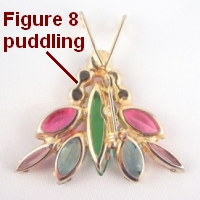
|
"Figure 8" PuddlingThis attribute occurs when the solder between 2 or more small round rhinestones "puddles" or "pools" between those two rhinestones making them look like a figure 8. If you see this type of puddling, you can be confident that you have a genuine piece of D&E jewelry. It is the only attribute that other manufacturers were not able to copy. | ||||||||
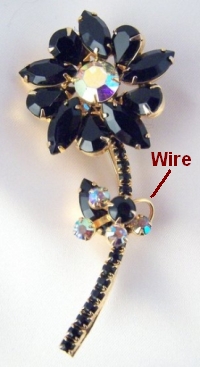
|
"Wire over Rhinestone"This attribute occurs when one or more rhinestones "floats" on a wire over other rhinestones. An example of this can be seen on the stem of the flower pin. 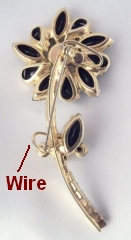 The back of the brooh clearly shows the wire that supports the "floating" rhinestones. The back of the brooh clearly shows the wire that supports the "floating" rhinestones.
| ||||||||
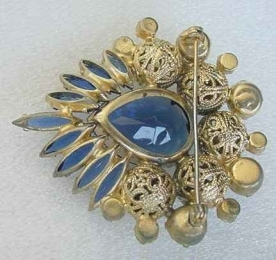
|
Built-in Pin BacksMost, but not all, D&E pin backs are "built in." This means that the pin assembly was actually part of the brooch. It was not produced as a separate piece and then glued or riveted to the back. | ||||||||
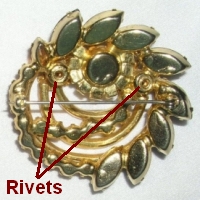
|
Rivets/EyeletsMr. De Lizza refers to these as eyelets. While many manufacturers used rivets, the rivets in D&E Jewelry often appear as though they have been sunk into the solder and they look very sturdy. | ||||||||
View more Juliana Jewelry in our Juliana GalleryClick the pictures to view pages
| |||||||||